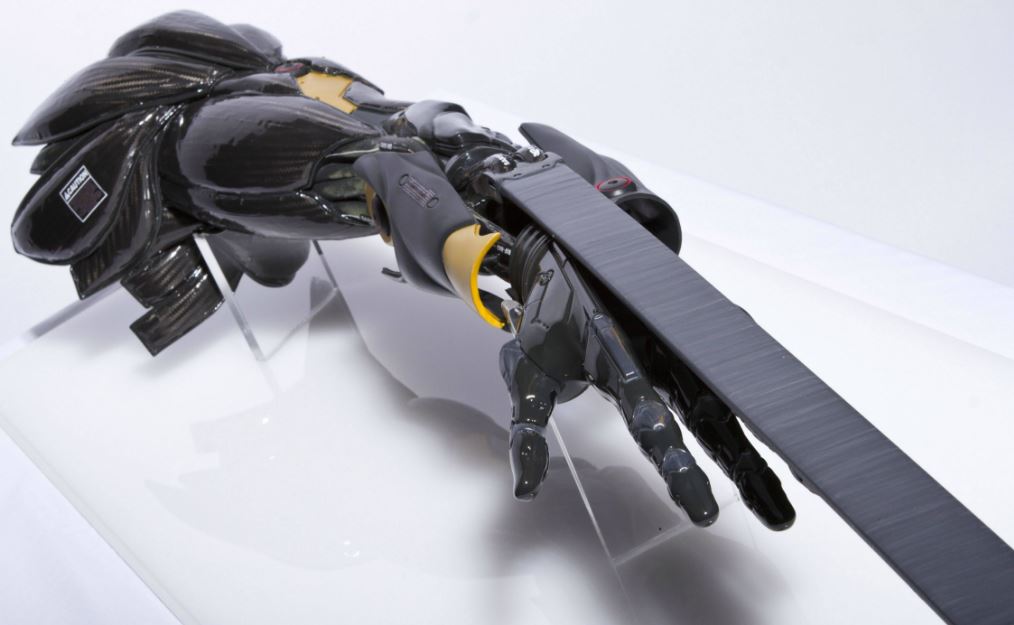Human augmentation is no longer a futuristic fantasy that belongs in science fiction. Sure, we won’t have Adam Jensens walking around anytime particularly soon. However, the concept of the cybernetics-filled hero of Deus Ex’s most recent instalments throws up an interesting question: is the world Jensen occupies likely to ever be a reality?
Yes, is the short answer, although it may be some time before these kinds of augmentations hit the cosmetic market.
The most obvious example of such technologies would be the arm created by Open Bionics, directly influenced by those sported by Jensen, and even named after the series. It’s not the first of its kind either; Nigel Ackland, a man I had the privilege of briefly meeting at the New Scientist Live exhibition in September, was the first to trial the bebionic3 hand, and a young man from London is the recipient of an MGSV-inspired arm, complete with USB charging ports, a digital display and even a drone.
In my previous article, I touched on how the disabled protagonist is more often than not an amputee graced with some form of robotic limb so overpowered that it cancels out the disability entirely. Adam Jensen falls squarely into this category, seeing as nearly every inch of his body has been replaced with some form of cybernetic implant or bionic prosthetic.
Adam Jensen is a badass motherfucker. He’s augmented up to his eyeballs – literally! – sporting legs that can launch him high into the air, arms that can fire a pulse of incapacitating energy and skin that can turn into a bulletproof shield. Now, I’m not saying I would decline the opportunity to obtain a Taser fist, but out of every flashy aug Jensen has beneath that stylish trenchcoat and shades the ones I want the most are his retinal implants. What a shocking development, I hear you cry! Well it seems that finally it may be a reality with SecondSight’s visual prosthetic, the Orion I.
When I was about thirteen or fourteen, I remember being sat in the consulting room of the ophthalmologist responsible for monitoring my blind eye, the left. My mother posed him a question: one day, could there be any technology that would allow me to see out of that blind eye? Unlikely, was his response. This was due to the neural pathways in the brain not being formed. We accepted this and moved on, obviously unaware that around a decade later something like the Orion would exist.
The Orion may look like something straight out of Deus Ex – fittingly, the article was shared by the Deus Ex Facebook page – and that’s because in a way it is, though we’re not quite at the stage where we can see through walls, have an HUD with radar, and mirrored shades that slide smoothly out of the skin on our faces.
It’s something I’ve thought about a lot over the years. Before the tumour that rendered me legally blind, I didn’t really consider myself visually impaired. I’d grown up with it, I didn’t know any different. Then, when I underwent the treatment for my tumour at seventeen, I became acutely aware of just how disabling one blind eye can be. Thoughts of retinal implants became a preoccupation. To possess something that would afford me the independence and opportunities I felt robbed of was a dream. So, understandably, emotions ran high when the article popped up on my news feed. Question is, given the choice would I actually go for it?
Being visually impaired is something so integral to who I am as a person that I’m not sure I would want to change it. There are days where I do wish that I didn’t have to traverse this difficult, albeit life-defining path. In the months following my treatment I spent almost every night wishing I could be told ‘the retinal tissue has grown back, it’s a miracle!’ or be presented with a glossy brochure full of swanky implants for me to choose from. And whilst the Orion is yet to undergo proper clinical trials, there is hope – at least, hope from me – that it’ll be passed by the FDA and become a viable option for those of us with visual impairments.
This may very well be the start of the era of Deus Ex: Human Revolution. Companies like Sarif Industries may start to crop up in the next few years, schmoozing their way into our wallets with the promise of an leg that can shoot fireballs, cook a five course meal and schedule you a doctor’s appointment (although maybe not simultaneously). But let’s take it one step at a time. Let’s start with making prosthetics like the Open Bionics arm or the Orion I widely available to those in need. Adam Jensen may never have asked for this, but plenty of others do, so how about we give them the chance to feel like the superhero for once.
Some of the coverage you find on Cultured Vultures contains affiliate links, which provide us with small commissions based on purchases made from visiting our site. We cover gaming news, movie reviews, wrestling and much more.



